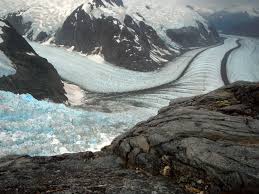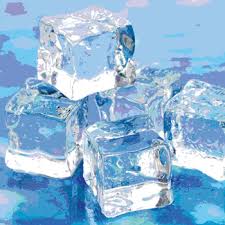Stamp: Cycling on Ice in black (France 2020)
Cycling on Ice in black (France 2020)
01 January (France ) within release MonTimbrEnLigne. National Geographic goes into circulation Stamp Cycling on Ice in black face value Ecopli No Face Value
| Stamp Cycling on Ice in black in catalogues | |
|---|---|
| Colnect codes: | Col: FR-TIM 2020-36Bb |
Stamp is square format.
Also in the issue MonTimbrEnLigne. National Geographic:
- Stamp - Castle face value Lettre;
- Stamp - Buffalo face value Lettre;
- Stamp - Chimpanzees face value Lettre;
- Stamp - Monkeys face value Lettre;
- Stamp - Mountain 10 face value Lettre;
- Stamp - Mountain 8 face value Lettre;
- Stamp - Mountain 9 face value Lettre;
- Stamp - Pinwheel Galaxy face value Lettre;
- Stamp - Red Sunset face value Lettre;
- Stamp - Solar Flare. Sun face value Lettre;
- Stamp - Sunset in the desert. Camel Caravan face value Lettre;
- Stamp - Sunset over water 5 face value Lettre;
- Stamp - Three Hippos face value Lettre;
- Stamp - Herd of Reindeer in colour face value Prioritaire;
- Stamp - Northern Landscape face value Lettre;
- Stamp - Rhino in black face value Prioiritaire;
- Stamp - Sunset over Water 1 in black face value Lettre;
- Stamp - Castle in black face value Lettre;
- Stamp - Lake and Mountain View 10 face value Lettre;
- Stamp - Pyramids face value Lettre;
- Stamp - Herd of Reindeer in colour face value Ecopli;
- Stamp - Pyramids face value Prioritaire;
- Stamp - Rice Terraces face value Lettre;
- Stamp - Silhouette of Tree at Sunset in black face value Prioritaire;
- Stamp - Grand Prismatic Spring, Yellowstone Park, USA in black face value Lettre;
- Stamp - Cheetahs in black face value Lettre;
- Stamp - Cycling on Ice in black face value Ecopli;
- Stamp - Eiffel Tower 2 in black face value Lettre;
- Stamp - Flight of Birds at Sunset in black face value Lettre;
- Stamp - Gazelle in black face value Ecopli;
- Stamp - Lake and Mountain View 7 face value Lettre;
- Stamp - Polar Bears in black face value Lettre;
- Stamp - Pyramids in black face value Lettre;
- Stamp - Rice Terraces in black face value Lettre;
- Stamp - Lake and Mountain View 10 in black face value Lettre;
- Stamp - Grand Prismatic Spring, Yellowstone Park, USA face value Lettre;
- Stamp - Northern Landscape face value Ecopli;
- Stamp - Polar Bears face value Ecopli;
- Stamp - Reindeer Calf in black face value Lettre;
- Stamp - Huskies face value Lettre;
- Stamp - South Iceland in black face value Lettre;
|
Data entry completed
46%
|
|
|---|---|
| Stamp Cycling on Ice in black in digits | |
| Country: | France |
| Date: | 2020-01-01 |
| Emission: | Personalized - Official |
| Format: | Stamp |
| Face Value: | Ecopli No Face Value |
Stamp Cycling on Ice in black it reflects the thematic directions:
Cycling, also known as bicycling or biking, is the activity of riding a bicycle or other type of cycle. It encompasses the use of human-powered vehicles such as balance bikes, unicycles, tricycles, and quadricycles. Cycling is practised around the world for purposes including transport, recreation, exercise, and competitive sport.
A glacier (US: /ˈɡleɪʃər/; UK: /ˈɡlæsiər, ˈɡleɪsiər/) is a persistent body of dense ice that is constantly moving under its own weight. A glacier forms where the accumulation of snow exceeds its ablation over many years, often centuries. It acquires distinguishing features, such as crevasses and seracs, as it slowly flows and deforms under stresses induced by its weight. As it moves, it abrades rock and debris from its substrate to create landforms such as cirques, moraines, or fjords. Although a glacier may flow into a body of water, it forms only on land and is distinct from the much thinner sea ice and lake ice that form on the surface of bodies of water.
Ice is water that is frozen into a solid state, typically forming at or below temperatures of 0 °C, 32 °F, or 273.15 K. As a naturally occurring crystalline inorganic solid with an ordered structure, ice is considered to be a mineral. Depending on the presence of impurities such as particles of soil or bubbles of air, it can appear transparent or a more or less opaque bluish-white color.
A landscape is the visible features of an area of land, its landforms and how they integrate with natural or man-made features. A landscape includes the physical elements of geophysically defined landforms such as (ice-capped) mountains, hills, water bodies such as rivers, lakes, ponds and the sea, living elements of land cover including indigenous vegetation, human elements including different forms of land use, buildings and structures, and transitory elements such as lighting and weather conditions. Combining both their physical origins and the cultural overlay of human presence, often created over millennia, landscapes reflect a living synthesis of people and place that is vital to local and national identity. The character of a landscape helps define the self-image of the people who inhabit it and a sense of place that differentiates one region from other regions. It is the dynamic backdrop to people’s lives. Landscape can be as varied as farmland, a landscape park, or wilderness. The earth has a vast range of landscapes, including the icy landscapes of polar regions, mountainous landscapes, vast arid desert landscapes, islands and coastal landscapes, densely forested or wooded landscapes including past boreal forests and tropical rainforests, and agricultural landscapes of temperate and tropical regions.




